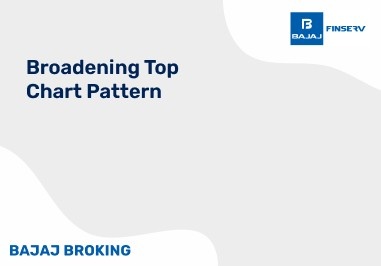BAJAJ BROKING
Retaggio Industries IPO is Open!
Open a Free Demat Account
Trade Now, Pay Later with up to 4x
Track Market Movers Instantly
SEBI’s Peak Margin Rules
As an investor or trader in the Indian stock market, you might have already heard about SEBI’s Peak Margin Rules. Since these rules have a significant impact on how you trade, understanding them becomes vital to avoid common margin trading pitfalls.
In this blog, we’ll break down the concept of peak margin, why it’s essential, and how SEBI’s peak margin rules affect your trading activities. So, let’s dive in and explore the world of peak margin!
What is Peak Margin?
Peak Margin refers to the amount of funds you need to maintain in your trading account to cover your trading positions’ margin requirements at any given point in time. In simple terms, it’s the highest margin obligation you have during the trading day. This ensures that you have enough capital to support your positions, even if the market moves against you.
Why is Peak Margin Important?
Peak Margin is crucial for maintaining stability and reducing the risk in the stock market. Peak margin helps prevent market manipulation and curtails excessive speculation by ensuring that investors maintain enough funds in their accounts to support their positions. It also protects traders from taking on those risks which they might not be able to afford.
What are SEBI Peak Margin Rules?
The Securities and Exchange Board of India, or the SBI, is the regulatory body that oversees the Indian stock market. In August 2021, SEBI introduced the Peak Margin Rules, which significantly changed the margin requirements for trading in the cash and derivatives segments.
Under these rules, traders are required to maintain the total margin upfront, also known as the peak margin, for their positions. Any failure to comply with the Peak Margin rules result in penalties and can also lead to suspension of trading activities.
How Does Peak Margin Work?
Let’s understand how peak margin works with an example. Imagine you want to buy 100 shares of a company’s stock at ₹200 per share. The margin requirement for this stock is 10%, which means you need to maintain 10% of the total trade value in your account as a margin.
Without the Peak Margin Rules, you would only need to maintain 10% of the total trade value at the time of entering the trade, which is ₹2,000 (10% of 100 shares * ₹200 per share).
However, with the Peak Margin Rules in place, you would need to maintain the peak margin, which means you have to have ₹20,000 in your account before entering the trade.
New Framework Introduced by SEBI
SEBI introduced a new framework which came into effect on August 1, 2022, directing brokers to consider the Beginning of Day (BOD) rates for calculating margin collections from clients. This adjustment ensures that the margin rate remains constant and doesn’t fluctuate with changes in the underlying security price. However, it’s important to note that this change only applies to upfront margin collection from clients, and there is no alteration to the method of calculating and collecting the client’s End of Day (EOD) margin obligation.
The revised approach is expected to ease the financial burden on brokers and provide them with more clarity in margin calculations. By reducing the frequency of peak margin evaluations, brokers can now better manage their resources and ensure compliance with SEBI’s regulations effectively. This step reflects SEBI’s commitment to enhancing market stability and safeguarding the interests of investors and market participants.
How Does This Affect You as a Trader?
If you were a cash segment stock trader, this regulation did not change the way you traded. However, if you were a derivative trader (including commodities), this regulation had a significant impact on your trading approach.
For instance, let’s consider a scenario where you were trading in bank nifty weekly options. Based on the beginning-of-day margin requirements, you needed ₹10,000 to trade in it. So, you deposited ₹11,000 in your trading account and executed the trade. But due to market fluctuations and volatility, the margin requirement increased to ₹12,000, and you only had ₹11,000 cash in your trading account. As a result, depending on the time of snapshot taken by the clearing corporation of your position, you could be subject to a short-margin penalty.
However, starting from August 1, 2022, that penalty was no longer charged. The margin requirement at the beginning of the trading day remained applicable throughout the entire trading session. This change allowed traders to calculate their positions more accurately, enabling them to deploy just enough capital to execute trades and better manage their resources.
Conclusion
SEBI’s Peak Margin Rules have been a game-changer in the Indian stock market. By requiring traders to maintain the entire margin upfront, these rules aim to create a more stable and secure trading environment. Though there has been criticism of the Peak Margin rules, they have however ensured market stability.
It is of paramount importance for you to stay informed about the Peak Margin rules and ensure compliance with them. So, stay informed, trade responsibly, and embrace the changes brought about by SEBI’s peak margin rules for a safer and more reliable trading experience.
Share this article:
Read More Blogs
Our Secure Trading Platforms
Level up your stock market experience: Download the Bajaj Broking App for effortless investing and trading













